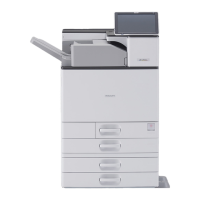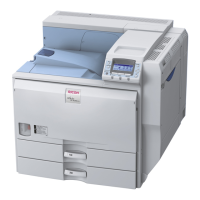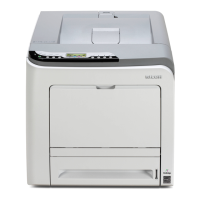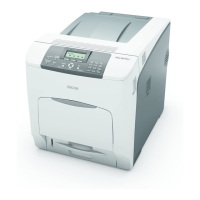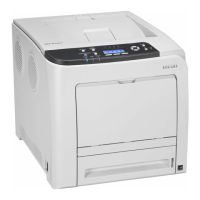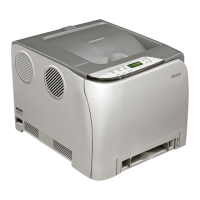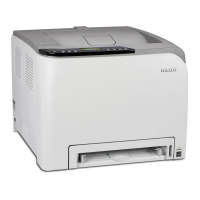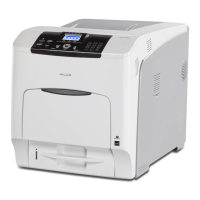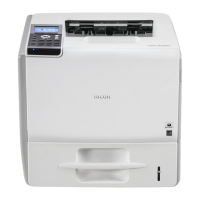10. Click [Network Printer], and then click [OK].
11. Double-click the name of the NetWare file server on the network tree.
The created queue is displayed.
12. Select the print queue, and then click [OK].
13. Check that the port of the selected printer is displayed in [Port:].
14. Click [Continue].
The printer driver installation starts.
15. Click [Finish] in the [Select Program] dialog box.
16. After the installation is completed, select one of the options to restart the computer either
now or later, and then click [Finish].
Restart the computer to complete installation.
17. After restarting the computer, launch the [Printers] window, and then open the printer
properties.
Under Windows XP or Windows Server 2003, open the printer properties from the [Printers and
Faxes] window.
18. Click [Finish] in the [Introduction complete] dialog box.
19. In the [Printers] window, open the printer properties.
Under Windows XP or Windows Server 2003, open the printer properties from the [Printers and
Faxes] window.
20. On the [Printer Settings] tab, clear the [Form Feed] and [Enable Banner] check boxes.
Under Windows 2000/XP, Windows Server 2003, or Windows NT 4.0, click the [NetWare setting]
tab.
Do not select these check boxes since they are automatically selected by the printer driver. If you
select the check boxes, the printer may not print correctly.
21. Click [OK] to close the printer properties dialog box.
• Auto Run may not work with certain operating system settings. If this happens, launch "Setup.exe" on
the CD-ROM root directory.
• To stop installation of the selected software, click [Cancel] before installation is complete.
• The protocol is set to inactive as default. Enable it using Web Image Monitor or Telnet
When using the PostScript 3 Printer Driver
Follow the procedure below to set up the PostScript 3 printer driver.
Using as the NetWare Print Server/Remote Printer
51
